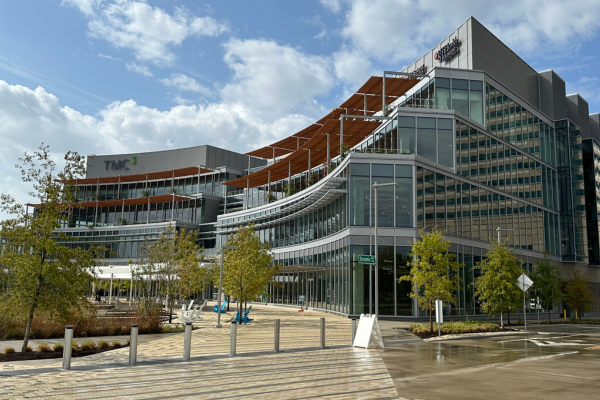Work Safe 3.0: Principles to Operate Businesses in Houston Safely
Published Nov 10, 2020 by Clint Pasche
As businesses operate during the COVID-19 pandemic, it is important that we do so safely, sustainability and successfully. The Greater Houston Partnership created these principles to aid companies as they plan to restart or expand in-person business functions while protecting the health of their employees and customers.
This list of Work Safe principles has been modified from two earlier versions to reflect evolving federal and state guidance, and this list either meets, exceeds or expands on that guidance.
1. Create a safe work environment for all on-site employees.
- Face masks or coverings should be worn at all times, especially when in a shared space with other employees such as a conference or break room. Masks should be worn properly, which means snuggly-fitting and covering both the nose and mouth.
- Ensure proper social distancing by creating physical separation. Health officials advise that all individuals should remain at least six feet apart to avoid possible transmission. This is especially true in environments where mask-wearing is not possible. Employers should establish protocols that allow all on-site employees to maintain a distance of at least six feet while working.
- Encourage proper hygiene. Employers should provide sufficient hand sanitizing stations, guidelines for proper hand washing and soap at all hand-washing stations to ensure proper hygiene in the workplace.
- Close communal spaces. Where possible, employers should discontinue use of any communal spaces such as lunchrooms, breakrooms, meeting rooms and other gathering spaces to avoid unnecessary person-to-person exposure unless a physical distance of at least six feet between individuals can be maintained.
- Decrease physical contact. Establish measures to limit interaction between individual employees as well as employees and customers. Utilize contactless solutions.
- Expand cleaning operations. Companies where workers must remain onsite should increase cleaning protocols of all high-touch and high-traffic areas throughout the day.
2. Require workers with COVID-19 or flu-like symptoms to stay home. To minimize exposure to other personnel, all workers who are experiencing even mild symptoms (principally fever, dry cough, sneezing) should avoid entering the workplace, report the situation to their supervisor, and remain home.
- Companies should consider adjusting paid sick leave (PTO) policies. Employers should remove disincentives for people self-reporting illnesses. It is to a company’s advantage for sick employees to stay home.
3. Allow employees to work from home as necessary. While many companies have returned some portion of their employees to the office, some employees, due to a variety of risk factors, may need to continue to work from home. Companies should make arrangements for these employees to continue to work remotely while facilitating connections with their on-site counterparts.
4. Eliminate crowding in the workplace. Limit the number of customers or individuals allowed in the business or workplace at one time to allow for social distancing. If possible, utilize markings to ensure safe spacing at all times.
- Create alternate teams. Employers with on-site staff should consider creating alternating teams (i.e. morning/afternoon shifts, day/evening, every other day) so that operations may continue if one team becomes exposed and is required to quarantine.
5. Employ virtual meeting technology. To avoid unnecessary exposure, employers should implement online video conferencing and other virtual meeting and messaging tools to conduct meetings.
6. Apply industry best practices to your reopening and expanding operations. National, state and local trade associations, along with leading companies in most business sectors, have developed robust sector-specific best practices to successfully and safely operate in this environment and have shared these resources online.
7. Encourage employees to observe safe travel guidance. Employers are strongly encouraged to follow the direction of public health officials to guide travel decisions outside of the Houston region. Employees should protect themselves and others during the duration of the trip, including following CDC travel guidelines. Travelers from high-risk areas should consult with their medical provider regarding self-quarantining and self-monitoring measures. (Note: A recent U.S. Defense Department study showed a low risk of contracting COVID-19 on board a plane when masked.)
8. Develop health checks. Create a plan to train employees in responsible health checks using proper techniques and protocols. Utilize temperature checks to monitor the health of employees and send home employees who display symptoms. Employees who have a fever or display symptoms of COVID-19 or flu-like illness should not be allowed to work.
9. Manage confirmed or suspected work-related cases. Implement a process to prevent the transmission of COVID-19 in the workplace in the event an employee tests positive or is exhibiting symptoms consistent with COVID-19. Employers must understand the legal considerations related to managing cases in the workplace, including issues around employee privacy. For more information on what can be done to manage confirmed or suspected cases in the workplace, click here.
10. Establish anonymous reporting. To maintain a safe work environment for on-site employees and customers, companies should create an anonymous complaint channel for employees and customers to report unsafe practices or violations of protocol during this COVID-19 period.
Learn more about the Houston Work Safe Program.
Updated on November 10, 2020. See previous iteration.
 The Houston Report
The Houston Report





















